As the birthplace of the Italian Renaissance, Florence is a city that deserves more than a day trip. Building upon my popular 1-day Florence itinerary for cruisers, this guide offers an expanded, five-day journey designed to immerse you in the city’s unparalleled art, rich history, and vibrant culture. From the moment you stand in the shadow of the magnificent Duomo to the serene views of the Boboli Gardens, you’ll witness the birth of the Renaissance firsthand. This guide balances must-see landmarks with authentic local experiences, ensuring you not only see the famous sights but also taste the delicious Florentine cuisine, discover hidden artisan workshops, and truly feel the magic of this breathtaking city!
Important Notes
- This itinerary includes five full days to explore Florence, including a day trip.
- There are no time constraints in this itinerary, allowing you to explore the city at your own pace and keeping in mind potential traffic and the lengths of different tours you might choose.
Day 1: The Duomo Complex
Morning
Florence Cathedral
Start your Florence trip in Piazza del Duomo, the city’s central square and a UNESCO World Heritage Site. This bustling square is not just a single landmark, but rather a monumental complex that represents the city’s power, wealth, and artistic achievements during the Renaissance.
At the center of the piazza stands the magnificent Florence Cathedral (Cattedrale di Santa Maria del Fiore), a stunning example of Italian Gothic architecture with a polychrome marble facade in shades of pink, green, and white. Its most iconic feature is Brunelleschi’s Dome, a Renaissance masterpiece of engineering and the largest masonry dome ever built.
While the exterior of the Duomo is a masterpiece, its vast Gothic interior is often found to be plain. Therefore, I do not recommend purchasing a separate ticket to walk the floor. Also, I recommend not climbing the steps in the Duomo and instead climbing the steps of Giotto’s Bell Tower, right next to the Duomo.
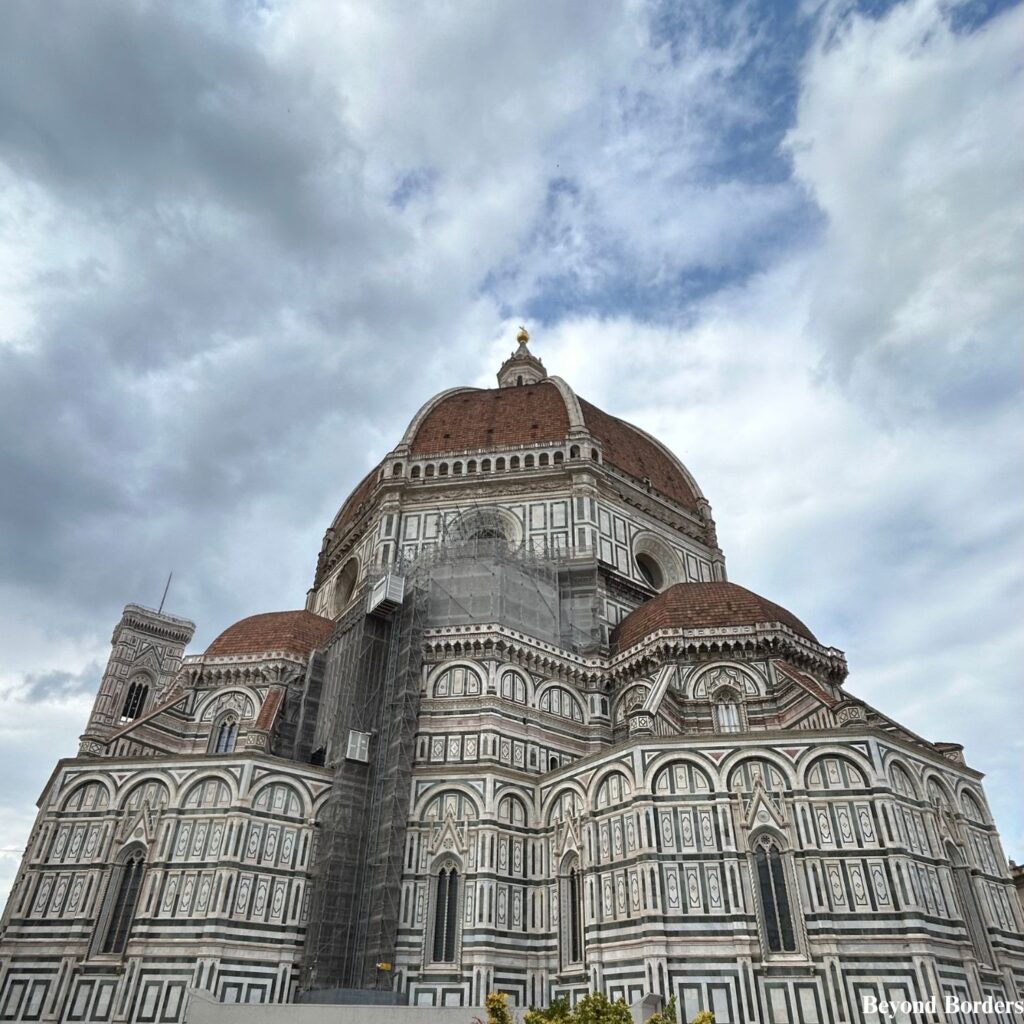
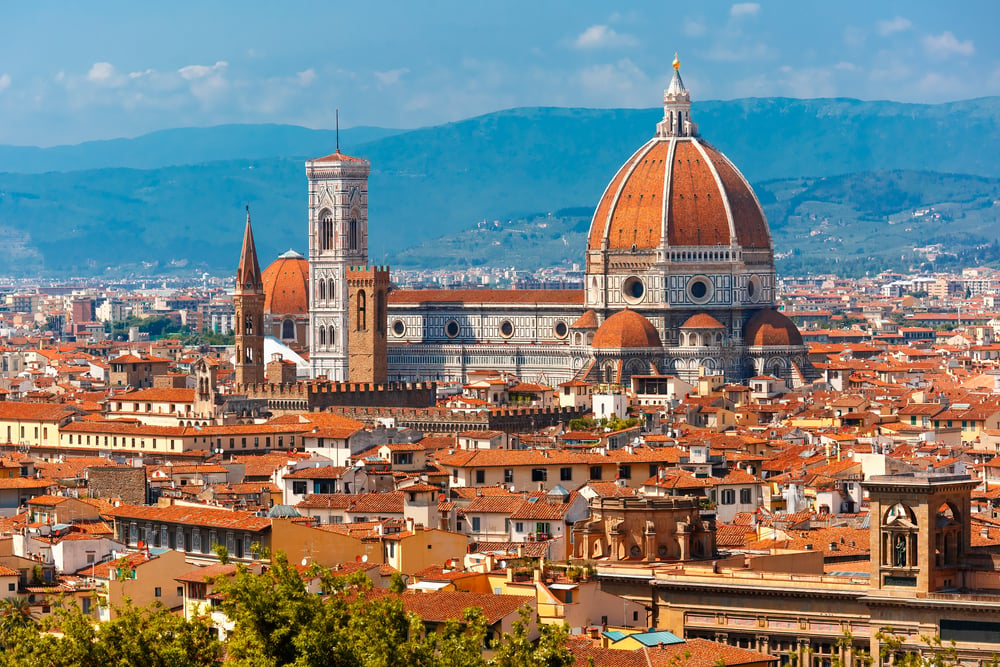
Giotto’s Bell Tower (Campanile di Giotto)
This bell tower is a stunning example of Italian Gothic architecture, standing distinct from the main cathedral. Its slender, graceful form, and its polychrome marble cladding in shades of white, red, and green, perfectly complement the Duomo’s own facade. Although named for the artist Giotto, who began its construction in 1334, he only completed the first level before his death. The work was continued by Andrea Pisano and later completed by Francesco Talenti in 1359.
You can climb the 414 steps to the top of the 84.7-meter (277-feet) tall tower. Here, you get one of the absolute best, unobstructed views of Florence! Furthermore, this view gives you a spectacular photo opportunity with Brunelleschi’s Dome in the frame. Your ticket for the Bell Tower also grants you access to the Baptistery of San Giovanni and the Duomo Museum, which you will see next! Make sure to purchase tickets on the official website in advance so you do not have to wait in line at the entrance.
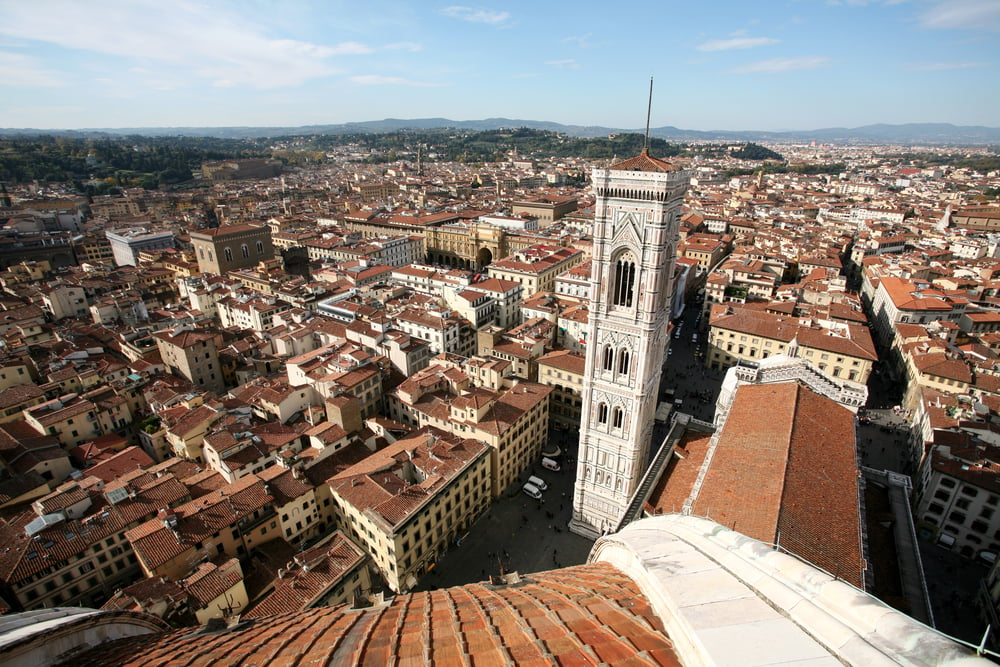
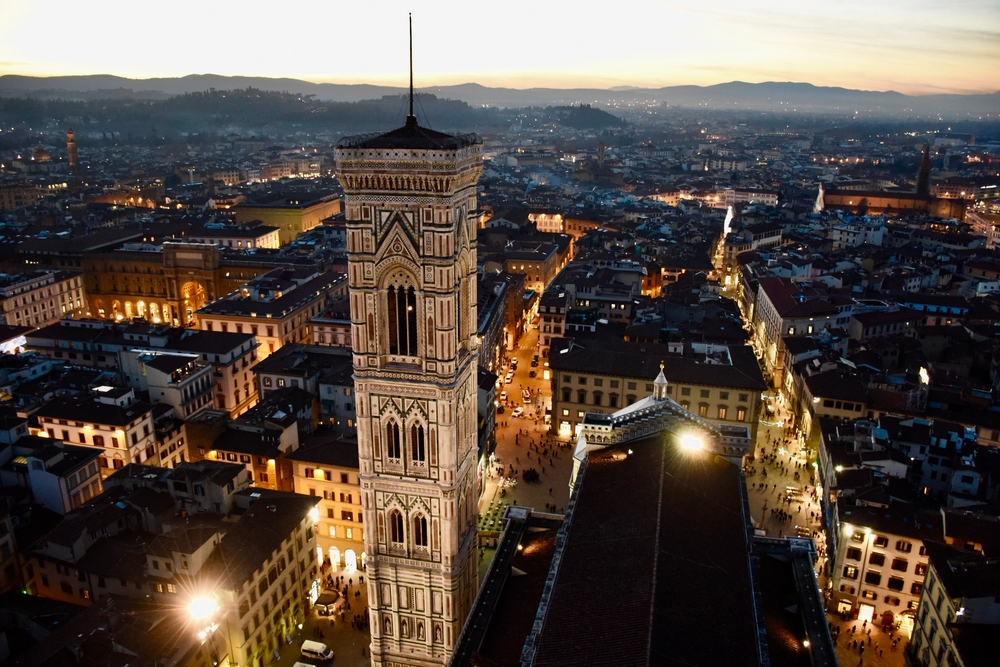
Afternoon
Museo dell’Opera del Duomo
This museum is a 2-minute walk from Giotto’s Bell Tower! Head east on Piazza del Duomo toward Via del Campanile, and you will see the museum ahead to the left.
The Museo dell’Opera del Duomo (Museum of the Works of the Cathedral in English) is an essential stop for anyone visiting Florence’s Piazza del Duomo! While the Duomo, the Baptistery, and the Bell Tower are worth visiting, this museum is where the original works of these monuments reside. This museum was founded to house and preserve the original masterpieces that were created to decorate the religious complex, protecting them from the elements and ensuring their longevity.
The museum’s modern and well-lit design provides a stunning setting for its collection of over 750 artworks. The centerpiece is the “Hall of Paradise” (Sala del Paradiso), where a monumental, life-sized reconstruction of the Duomo’s original medieval facade (designed by Arnolfo di Cambio) is displayed. Make sure to also see Michelangelo’s Pietà Bandini, an unfinished sculpture that the artist intended for his own tomb; Donatello’s Penitent Magdalene, a deeply moving and highly realistic wooden sculpture that depicts Mary Magdalene as an emaciated, repentant figure, a stark departure from traditional portrayals; and original statues from Giotto’s Bell Tower that once were on the exterior of the campanile.
I recommend spending around 1.5 hours here to explore the museum, but if you’re only focused on the major masterpieces, you can comfortably see the highlights in about an hour.
Lunch
For lunch, I recommend Panini Toscani, a sandwich shop adjacent to the museum. It overlooks the Duomo, and you can even customize your own panini.
Baptistery of San Giovanni (Saint John) and Basilica of Santa Croce
Walk back towards the Museo dell’Opera del Duomo to get to the Baptistery. Walk on Via dei Calzaiuoli and you will see the Baptistery up ahead towards the left.
The Baptistery of San Giovanni is one of Florence’s oldest and most significant buildings. Its octagonal shape is clad in the same green and white marble as the cathedral, creating a sense of harmonious unity within the piazza. The interior is a marvel of its own, with a magnificent dome covered in a dazzling mosaic depicting scenes from the Last Judgment and the lives of Christ and John the Baptist.
What the Baptistery is most famous for is its three sets of bronze doors. The oldest, the South Doors, were created by Andrea Pisano and depict scenes from the life of St. John the Baptist. The North Doors, by Lorenzo Ghiberti, portray scenes from the New Testament. Ghiberti’s most celebrated work is the East Doors, which face the Duomo. These doors, which Michelangelo famously nicknamed the “Gates of Paradise,” consist of ten gilded panels with scenes from the Old Testament. The originals of all three sets of doors have been moved to the nearby Museo dell’Opera del Duomo for preservation, and copies are now in their place on the Baptistery.
Next, walk 10 minutes to the Basilica of Santa Croce. Walk down Via dei Calzaiuoli and make a left onto Via della Condotta. Continue straight onto Via dell’Anguillara, and you will see the Piazza di Santa Croce and the Basilica up ahead.
The Basilica di Santa Croce is one of Florence’s most significant and monumental churches, often referred to as the “Temple of the Italian Glories” (Tempio dell’Itale Glorie) due to its function as the final resting place for some of Italy’s greatest people. The most prominent tombs belong to Michelangelo and Galileo Galilei, who was interred here a century after his death.
Beyond these celebrated burials, the church is a museum of early art in Florence, most notably featuring magnificent 14th-century fresco cycles by Giotto in the Bardi and Peruzzi Chapels and the harmonious Pazzi Chapel (designed by Brunelleschi) in the adjacent cloister, a pure masterpiece of Renaissance architecture. Buy tickets on the Basilica’s official website to make sure you get a spot.
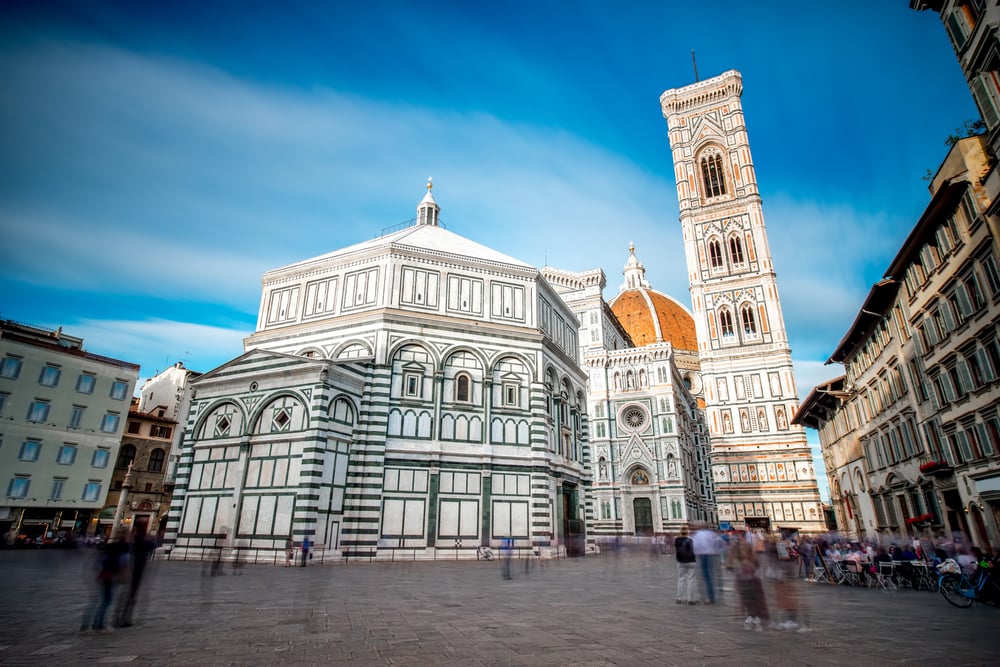
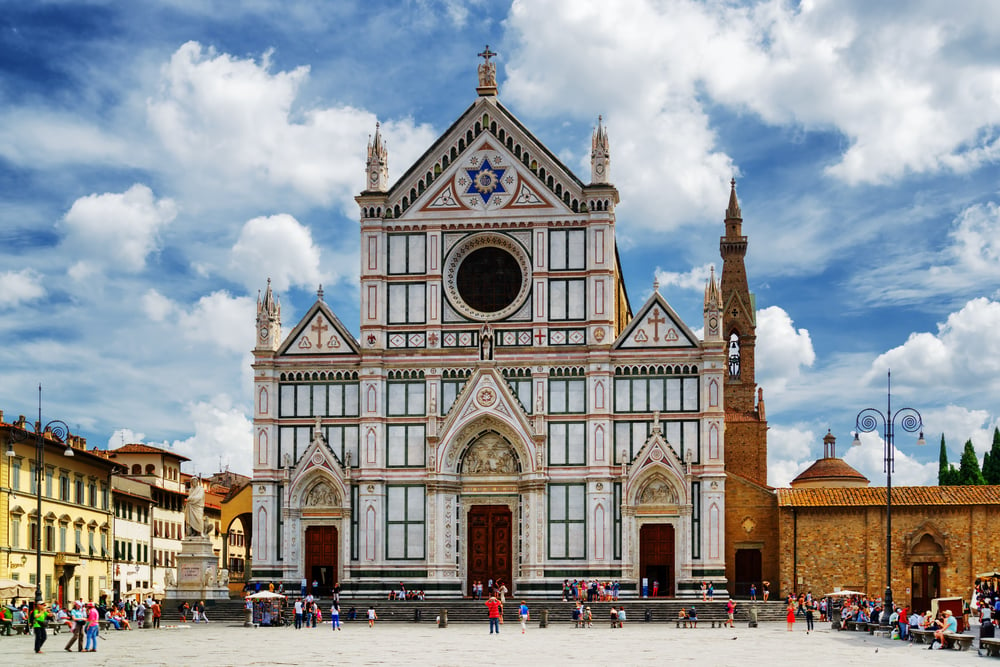
Evening
Ponte Vecchio and Oltrarno
Enjoy a leisurely walk through the Florence city center and cross the famous Ponte Vecchio, which translates to “Old Bridge.” Ponte Vecchio is one of Florence’s most enduring and iconic landmarks. Spanning the narrowest point of the Arno River, it stands out for its unique and picturesque appearance, which is more like a bustling street than a typical bridge.
What makes the Ponte Vecchio so distinctive are the shops built directly along both sides of the bridge. In the late 16th century, Grand Duke Ferdinando I de’ Medici, declared that only goldsmiths and jewelers could occupy the shops. This tradition has held to this day, and the bridge is now world-renowned for its exclusive jewelry and goldsmith workshops.
While many of Florence’s bridges have been destroyed over time by floods and war, the Ponte Vecchio has survived. It notably survived the great flood of 1966, and more famously, it was the only bridge in Florence spared from destruction by the retreating German army during World War II, reportedly on the direct orders of Adolf Hitler himself. After crossing Ponte Vecchio, explore the Oltrarno neighborhood and find a trattoria for a classic Florentine dinner.
Where to Eat in Oltrarno
For an authentic taste of the Tuscany region, the Oltrarno neighborhood is home to several highly-rated spots. Try traditional Tuscan cuisine at either I’Brindellone or Osteria del Cinghiale Bianco. If you’re craving something different, grab a fantastic slice at Gustapizza. For dessert, don’t miss Sbrino – Gelatificio Contadino, a must-visit, highly-rated gelato shop.
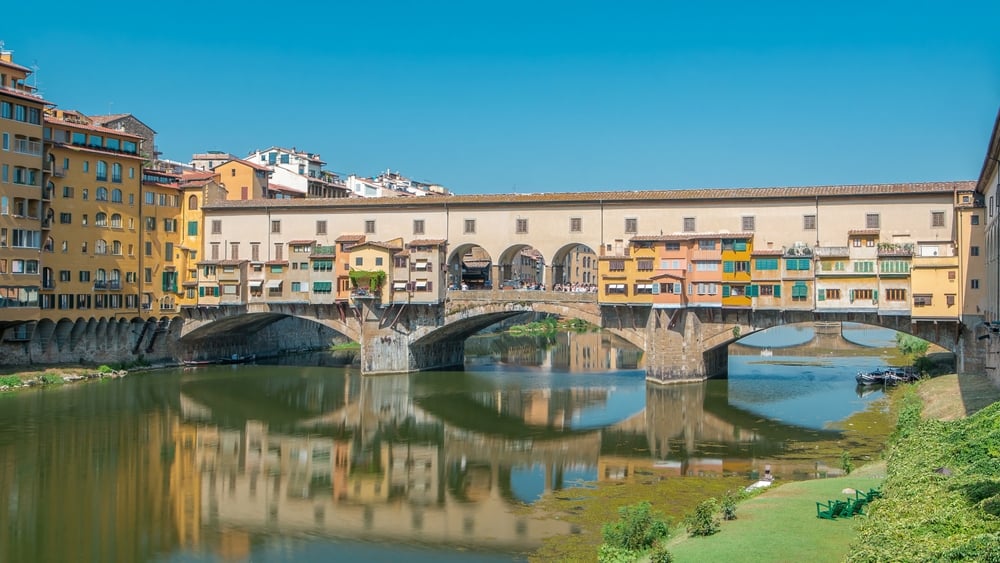
Day 2: Renaissance Masterpieces
Morning
Uffizi Galleries
Start your day at the Uffizi Galleries, one of the most famous and important art museums in the world. The museum is world famous for holding a collection that provides a comprehensive look at the evolution of Italian art, particularly during the Renaissance. The museum’s collection is arranged chronologically, allowing visitors to trace the development of art from the late Gothic period through the High Renaissance and beyond.
The gallery is particularly famous for its incredible concentration of masterpieces by Renaissance giants, including Sandro Botticelli, Leonardo da Vinci, Michelangelo, and Raphael. The most famous artworks at this museum are The Birth of Venus and Primavera by Botticelli, Annunciation by Leonardo da Vinci, and Venus of Urbino by Titian.
Don’t make the mistake of rushing through this incredible museum! I recommend booking a guided tour to help you navigate the immense collection and provide valuable context for these masterpieces. If you do not want to go on a guided tour, buy tickets on the official website and plan to set aside at least 3-4 hours here so you can truly immerse yourself in the art of the Renaissance.
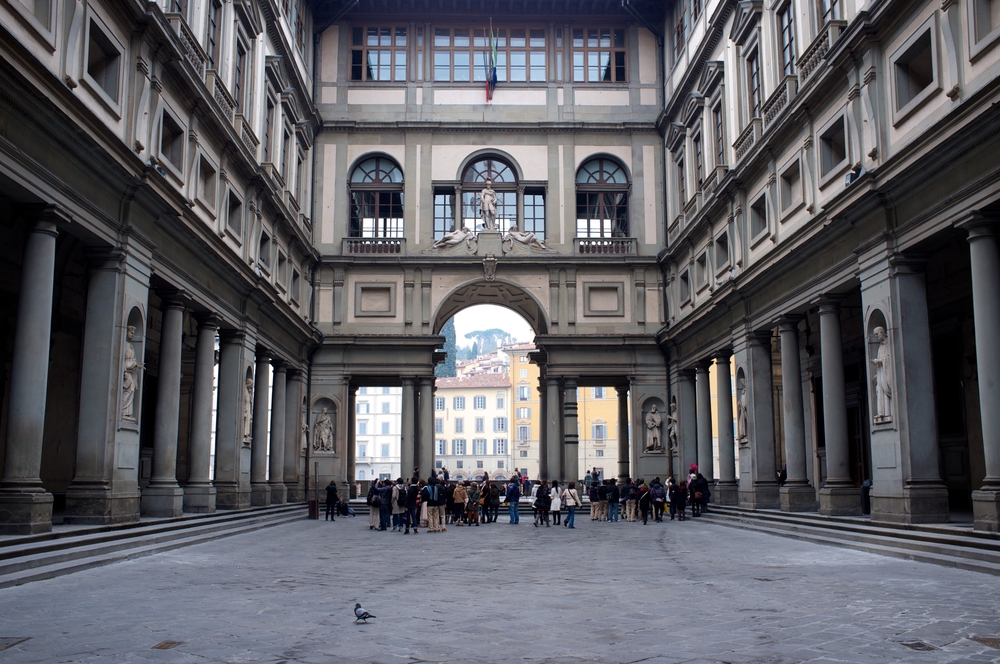
Afternoon
Lunch
For lunch, I highly recommend All’Antico Vinaio, a famous sandwich shop on Via dei Neri, which is only a 2-minute walk from the Uffizi Galleries! I have mentioned this sandwich shop in my 1-day in Florence itinerary, noting that while you will have to wait in line, the line moves quickly!
Piazza della Signoria and Palazzo Vecchio
Florence’s Piazza della Signoria is more than just a gathering place; it serves as a stunning, free, open-air sculpture museum right outside the Uffizi Gallery. It is lined with world-famous replicas and originals, including a faithful replica of Michelangelo’s David, marking its original spot as a symbol of defiance against tyranny. Also, don’t miss Bandinelli’s Hercules and Cacus and the collection of statues in the adjacent Loggia dei Lanzi, featuring dramatic masterpieces like Cellini’s original Perseus with the Head of Medusa.
Palazzo Vecchio is a fortress-like medieval palace that has served as Florence’s town hall since the 13th century. Its asymmetrical tower and formidable stone facade are iconic symbols of the city’s power and resilience. Today, it functions as both a museum and a working government building. Inside, you can explore the opulent rooms that were once the private residences of the Medici family, most notably the breathtaking Salone dei Cinquecento (Hall of Five Hundred), a massive hall decorated with stunning frescoes by Giorgio Vasari.
You can also climb the Tower of Arnolfo, which has one of the most rewarding views of the city, providing a complete picture of Florence’s rich history, from its political machinations to its unparalleled artistic heritage. Tickets are not required for the ground floor, but for the museum areas, it is recommended to purchase them in advance online to avoid long lines, especially during peak season. Buy tickets here, or you can book a guided tour on GetYourGuide or Viator if you wish.
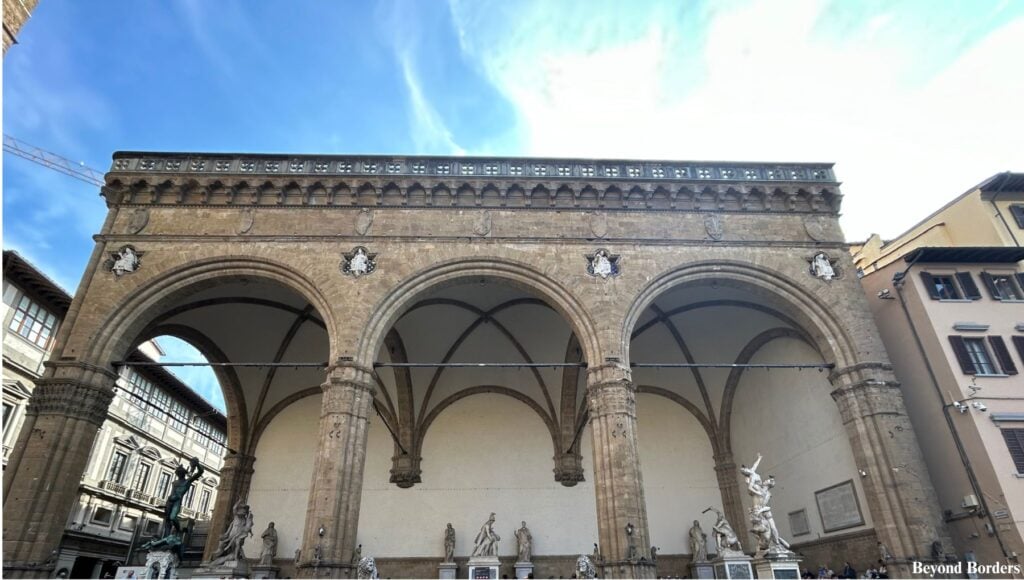
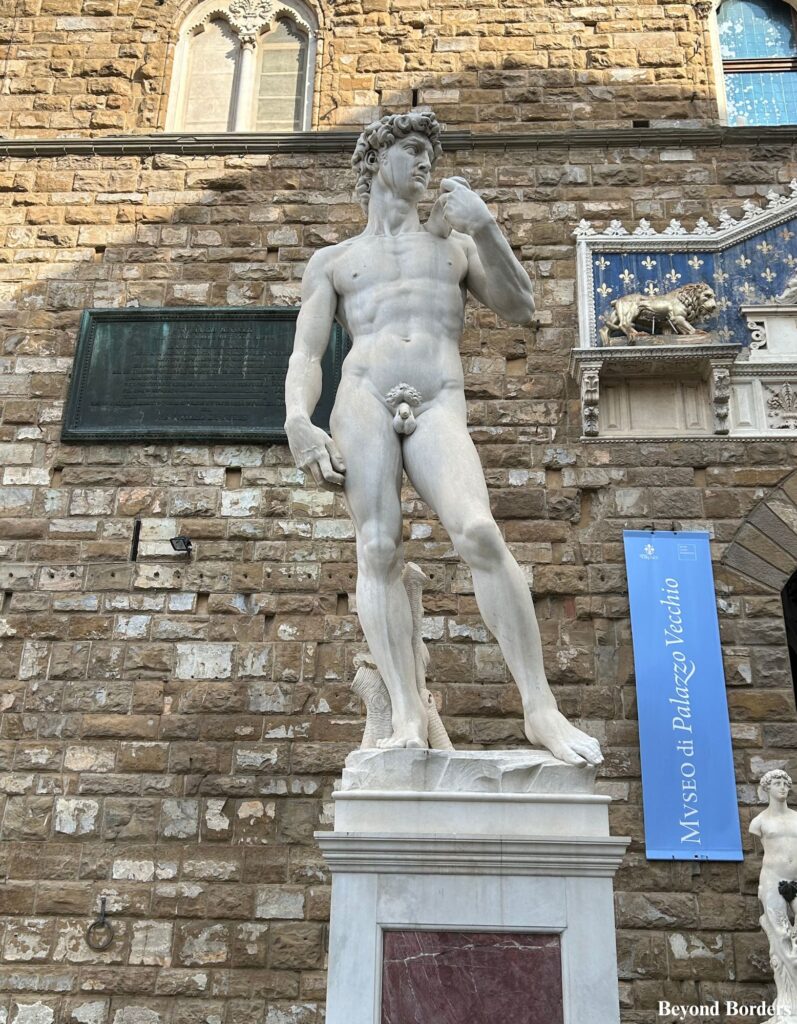
Evening
Dinner and Piazzale Michelangelo
Walk 25 minutes across either Ponte Vecchio or the less-crowded Ponte alle Grazie. Once across the river, walk left along the bank (or follow the signs) for the approximately 25-minute uphill journey to Piazzale Michelangelo, which promises the city’s most iconic panoramic view!
Piazzale Michelangelo is not an ancient piazza like the others in Florence, but it is undoubtedly the most famous and beloved viewpoint in the city, located on a hill in the Oltrarno neighborhood, on the south side of the Arno River. What makes Piazzale Michelangelo a must-visit is its breathtaking, panoramic view of Florence.
From this elevated position, you can see the entire cityscape spread out before you in a spectacular vista. The view captures all of Florence’s most iconic landmarks, including the Duomo, Giotto’s Bell Tower, the unique silhouette of the Ponte Vecchio, Palazzo Vecchio, and the magnificent dome of the Medici Chapels.
At the center of the square stands a bronze replica of Michelangelo’s David, along with bronze reproductions of the four allegories from the Medici Tombs in the Medici Chapels. Even though these statues are not the originals, their presence adds to the square’s tribute to the Renaissance master. The Piazzale is particularly popular at sunset to see the Florence skyline in golden light! You do not need tickets for Piazzale Michelangelo because it is a public square with free, 24/7 access. However, you can purchase tickets for guided tours if you wish.
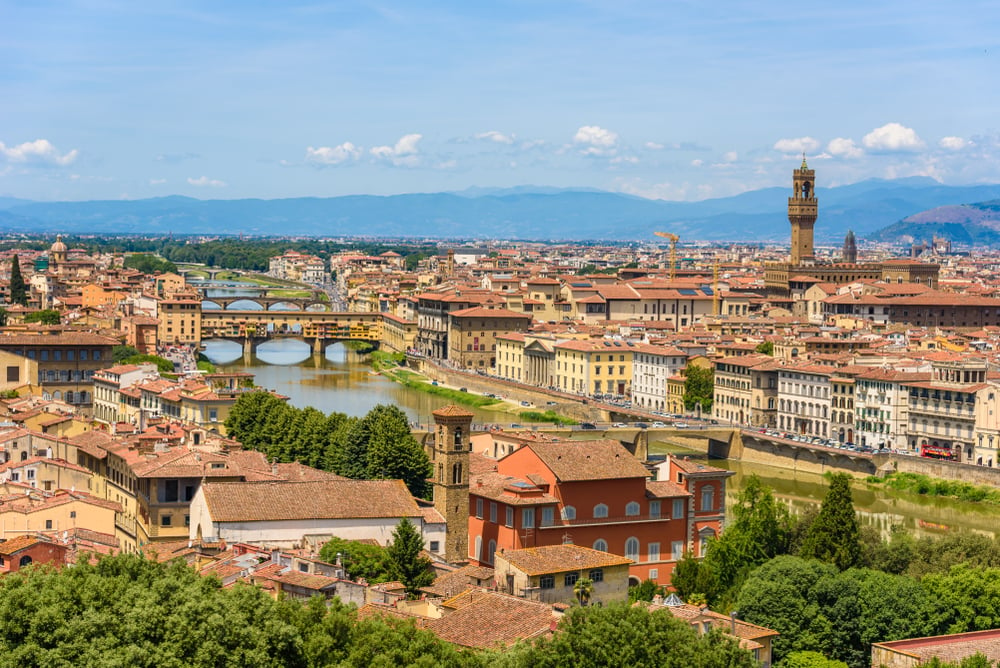
Day 3: More Art, Markets, and Medici
Morning
Galleria dell’Accademia
Today, first visit Florence’s Galleria dell’Accademia, home of the original David statue by Michelangelo. Seeing this monumental masterpiece in person is a truly awe-inspiring experience, as its immense scale and intricate detail are far more powerful than any photograph can capture. While David is the main attraction, the museum also houses other significant works by Michelangelo, including his unfinished Slaves sculptures, which offer a unique look into his creative process.
This museum is not large, so a guided tour should not take more than two hours. I recommend a guided tour rather than taking a self-guided tour to gain more context about the works. Purchase tickets on the official website if you do not want to take a guided tour. Book your tickets well in advance online, as the lines for same-day entry can be incredibly long, even during the off-season.
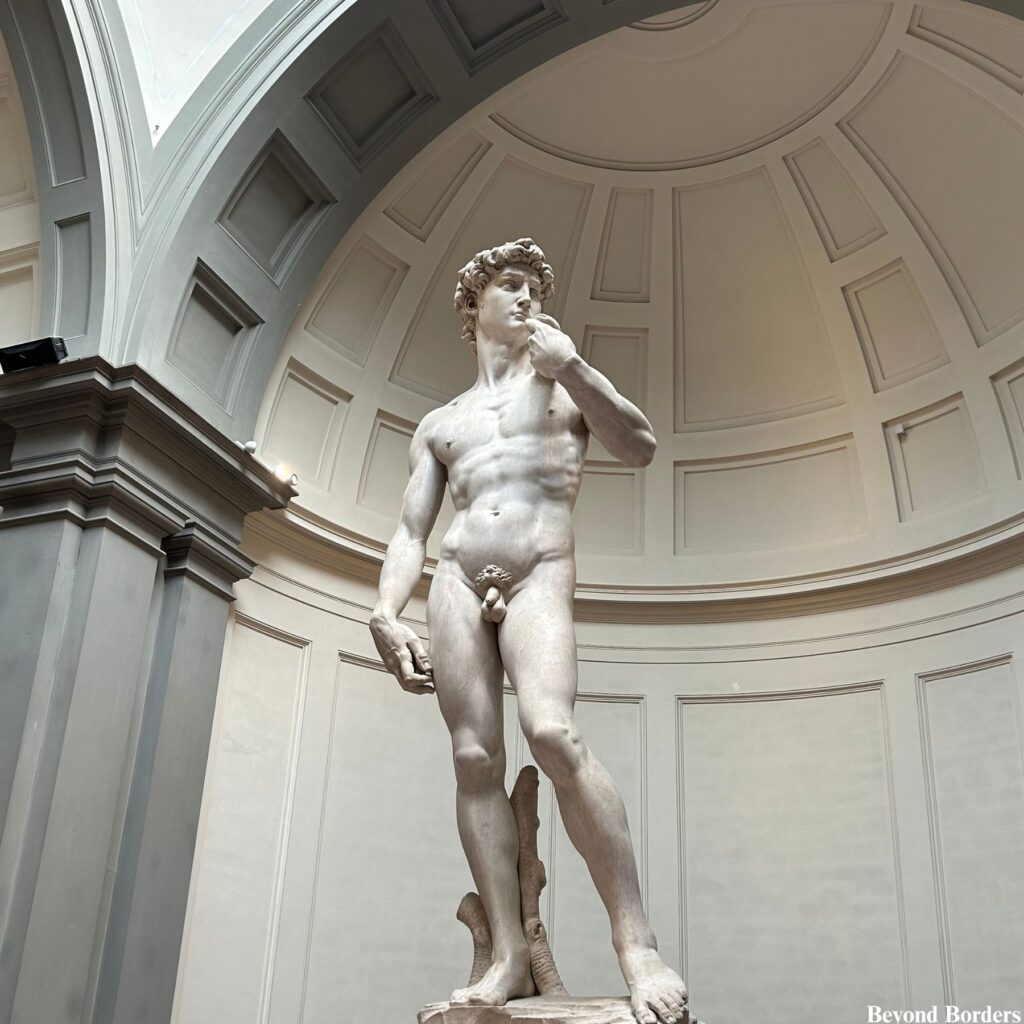
Afternoon
Lunch at the Mercato Centrale
Dive into local life at Florence’s Mercato Centrale. The ground floor is packed with local vendors selling fresh produce, cheeses, and artisanal goods. Then, head upstairs to the food court, where you can sample different foods and taste a large variety of Florentine street food and local dishes for an unforgettable lunch.
Evening
Basilica of San Lorenzo and Medici Chapels
Walk only 2 minutes from Mercato Centrale to the Basilica of San Lorenzo and the Medici Chapels. Walk down Via dell’Ariento and turn right onto Via del Canto dei Nelli. You will see the Basilica on your left.
The Basilica of San Lorenzo is a foundational masterpiece of the Renaissance, designed by Filippo Brunelleschi. It is one of the largest churches in Florence and served as the official church of the powerful Medici family. The clean, geometric interior is one of the earliest and most perfect examples of Renaissance architecture.
The Medici Chapels are a separate, monumental museum complex attached to the Basilica, built over two centuries to serve as the grand mausoleum for the dynasty, consisting of two distinct sections:
1. The first is the simple, harmonious New Sacristy, where you can witness the architectural and sculptural genius of Michelangelo, including his iconic allegories of Day and Night on the tombs of the dukes.
2. The second is the lavish Chapel of the Princes, a magnificent octagonal hall where the Grand Dukes are buried beneath walls entirely clad in stunning, precious pietre dure (hard stone) mosaics, reflecting the family’s immense wealth and power.
Tickets are required for both the Chapels and the Basilica, and they require separate admissions and have separate entrances:
1. For the Basilica, tickets are usually purchased at the church entrance on-site, though some private tours may offer combined access.
2. For the Chapels, it is highly recommended to buy tickets online in advance, especially during peak season, to skip the lines and guarantee your entry time.
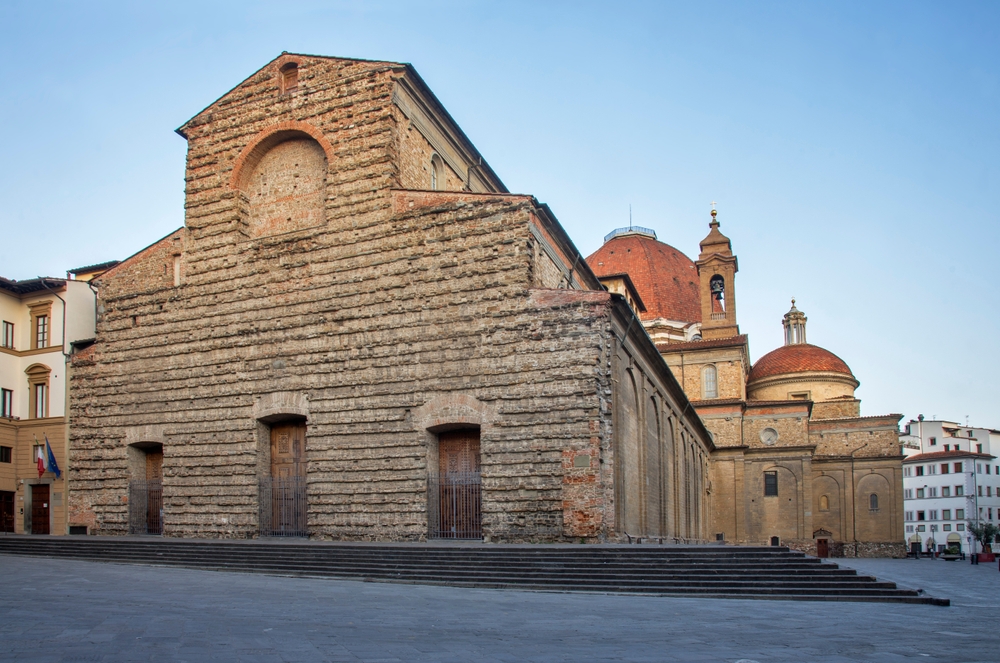
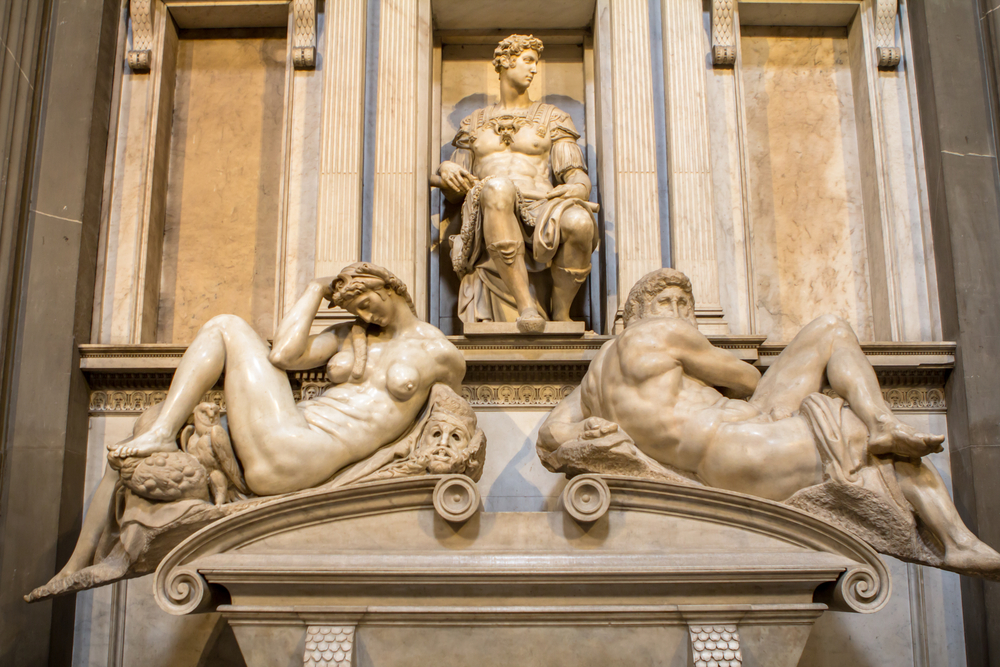
Day 4: Day Trip to Siena
While Florence offers endless beauty, it’s also the perfect base for an unforgettable day trip. I highly recommend a visit to Siena, a stunning medieval city best reached by the direct Rapida bus (line 131R from Autolinee Toscane bus line). The trip takes only about one hour and fifteen minutes and departs from the Firenze Autostazione, right next to the Santa Maria Novella (SMN) train station. The bus is the preferred choice as it drops you off directly at Piazza Gramsci/Viale Tozzi, much closer to the historic city center than the train station.
Once in Siena, spend the morning exploring the magnificent shell-shaped Piazza del Campo, climbing the Torre del Mangia for panoramic views, and touring the striped Gothic Duomo di Siena. For art lovers, a visit to the Palazzo Pubblico is essential to see the Civic Museum, home to the famous fresco cycle The Allegory of Good and Bad Government by Ambrogio Lorenzetti, which is considered one of the most important works of secular art from the Middle Ages.
Moreover, consider purchasing the Opa Si Pass to gain access to the Facciatone (the unfinished façade), which offers one of the absolute best panoramic views over the city. Before leaving, be sure to grab a local Ricciarello almond cookie and wander through a few of the historic Contrade (neighborhoods) to spot their unique emblems.
Alternatively, if you prefer vineyards over exploring a city, book a dedicated wine tour in the Chianti region, or tackle the classic two-stop day trip of Pisa and Lucca by train.
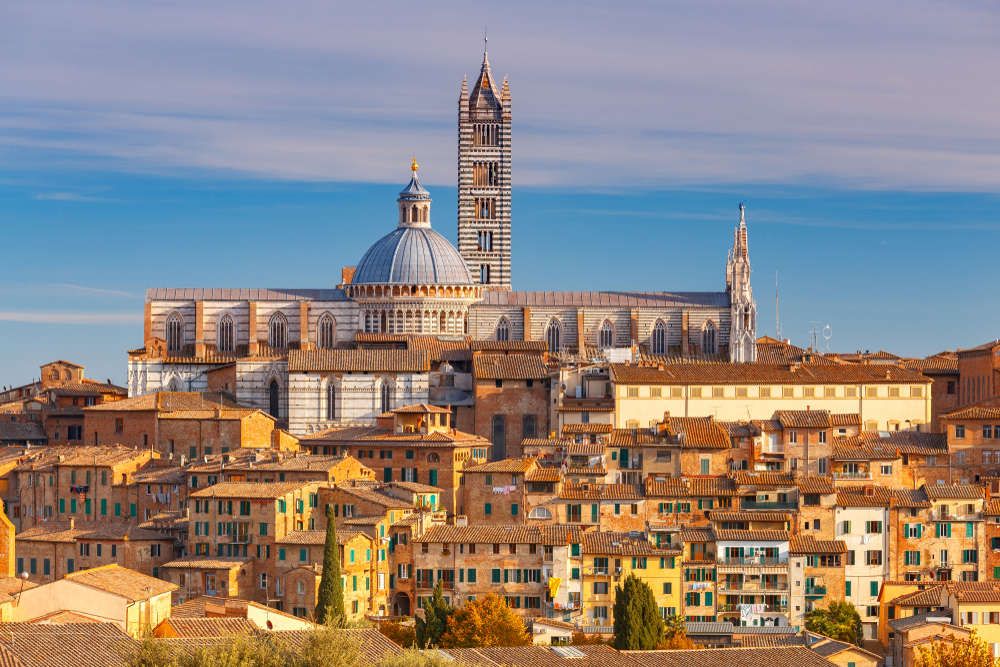
Day 5: Palaces, Gardens, and Craftsmanship in Oltrarno
Morning
Pitti Palace
Cross the Arno River to return to the Oltrarno neighborhood. Start by exploring the massive Pitti Palace. This former home of the Medici family now houses several museums; don’t miss the Palatine Gallery for its incredible collection of Raphael and Titian works, which are still hung in their lavish, original style! Make sure to buy tickets on the official website in advance, as lines for same-day entry can be long.
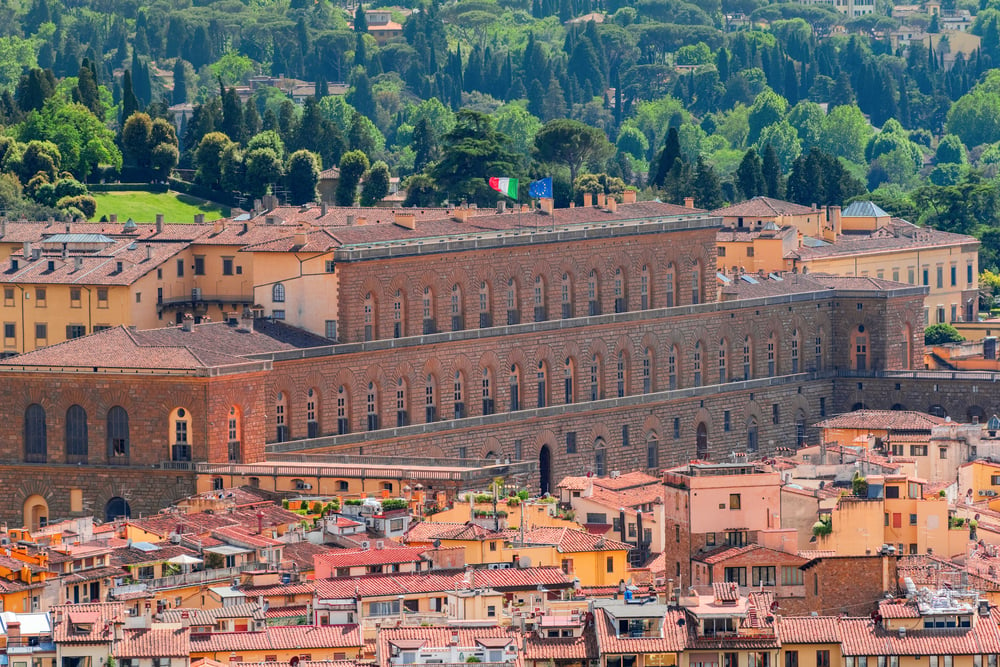
Afternoon
Lunch
For lunch, I recommend trying either Pizzeria Totò atto II or Osteria Le Pietre – Piazza de Pitti Firenze, both located adjacent to the palace and situated down the street from each other. Other options close to these include Caffè Gallo bistrot Firenze, Alimentari Del Chianti, and Enoteca Spontanea.
Boboli Gardens
Next, spend time wandering the extensive Boboli Gardens behind the palace, a masterpiece of Italian landscaping. After leaving the palace, take a moment to explore the nearby side streets, where you can peek into the workshops of local leather workers and goldsmiths. Again, make sure to buy tickets on the official website in advance, as lines for same-day entry can be long!
For a less-crowded alternative, consider the nearby Bardini Gardens, which are beautiful and often overlooked in comparison to the Boboli Gardens. Located on a hilltop, these gardens are famous for their spectacular Baroque staircase and the long, wisteria-covered pergola (especially beautiful in April and May). They also offer several unique, elevated terraces that provide breathtaking, intimate views across Florence and the Tuscan hills, with the river visible below. Buy tickets for the Bardini Gardens on the official website.
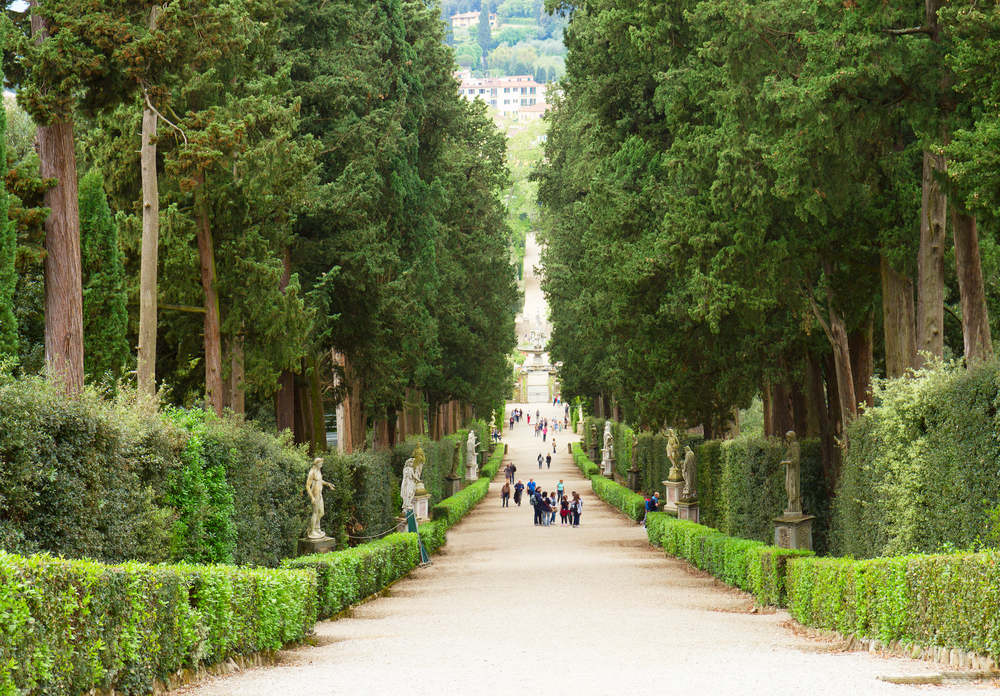
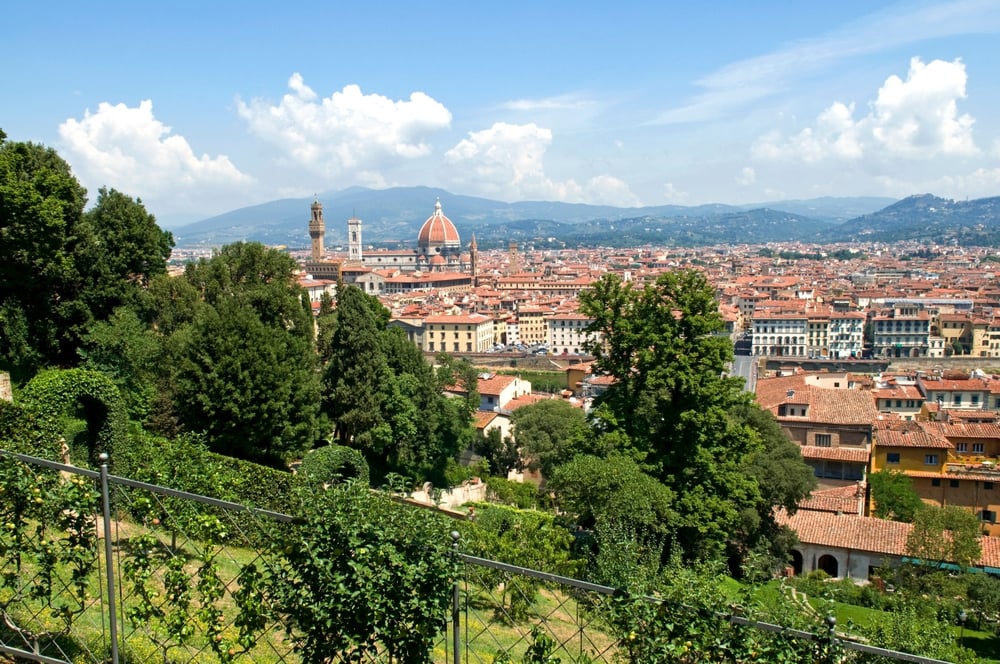
Evening
Artisan Quarter
The Oltrarno neighborhood is known as Florence’s traditional artisan quarter, so spend your last night exploring artisan workshops before dinner! Dedicate time to exploring the workshops along streets like Via Maggio and around Piazza Santo Spirito, where you can still find leather-working, jewelry, and paper-making studios in operation.
Afterward, settle into one of the area’s many wine bars for a traditional aperitivo, enjoying the lively, local buzz of the neighborhood square before choosing an authentic Florentine trattoria for your last dinner in Florence.
Where Should You Stay?
Luxury: St. Regis Florence; Four Seasons Hotel Firenze; Hotel La Gemma
These three hotels are the epitome of luxury in Florence. The St. Regis is located along the Arno River. Guests appreciated the exceptional service and beautiful rooms. The Four Seasons has beautiful gardens, and guests appreciated the rooms and balcony options. The Hotel La Gemma is located close to the Piazza della Signoria, and guests praised the hotel’s food and cleanliness.
Mid-Range: Hotel Pitti Palace al Ponte Vecchio; Hotel Berchielli
Hotel Pitti Palace al Ponte Vecchio is located along the Arno River. Guests loved the spacious and clean rooms. Hotel Berchielli is also located along the Arno River, and guests liked the large rooms and breakfast.
Budget: B&B San Remigio Florence; A Florence View; Secret Garden Firenze
These three bed and breakfasts are in fantastic locations and offer a convenient base and a cozy alternative to larger hotels. B&B San Remigio Florence is located near landmarks, but guests love that this hotel remains quiet at night. Guests also highlight the hospitality and attentiveness of the owner, along with the spacious rooms. A Florence View is located right next to the Duomo, and guests loved the amenities and rooms. Secret Garden Firenze is located on a quieter street but still within walking distance of attractions, and guests appreciated the hospitality of the owners and the breakfast.
